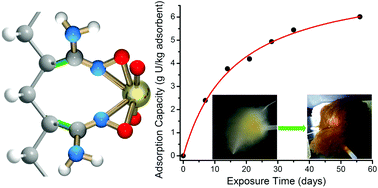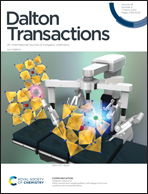A highly efficient uranium grabber derived from acrylic fiber for extracting uranium from seawater†
Abstract
Acrylic fiber can be chemically converted to an amidoxime and carboxylate containing chelating adsorbent by a two-step synthesis method for extraction of uranium from seawater. A portion of the nitrile groups in the fiber is first converted to amidoxime using hydroxylamine followed by conversion of another portion of the nitrile groups to carboxylate with NaOH. At an optimized ratio of amidoxime/carboxylate (about 1 : 1), the chelating fiber in real seawater shows a higher uranium adsorption capacity and shorter saturation time compared with similar high-surface-area chelating fibers developed recently using a radiation-induced grafting method. The saturation capacity of uranium is estimated to be 7.73 grams per kilogram of the adsorbent at 20 °C and the half-saturation time is about 15.7 days. The fiber shows a vanadium/uranium ratio of about 1 in real seawater tests. The low vanadium adsorption capacity of the fiber is attributed to the branched-chain amidoxime groups formed by the specified amidoximation process. This simple and low-cost synthesis method can be scaled up to mass produce the chelating fiber for recovering metals from various aquatic environments including production of uranium from seawater.



 Please wait while we load your content...
Please wait while we load your content...